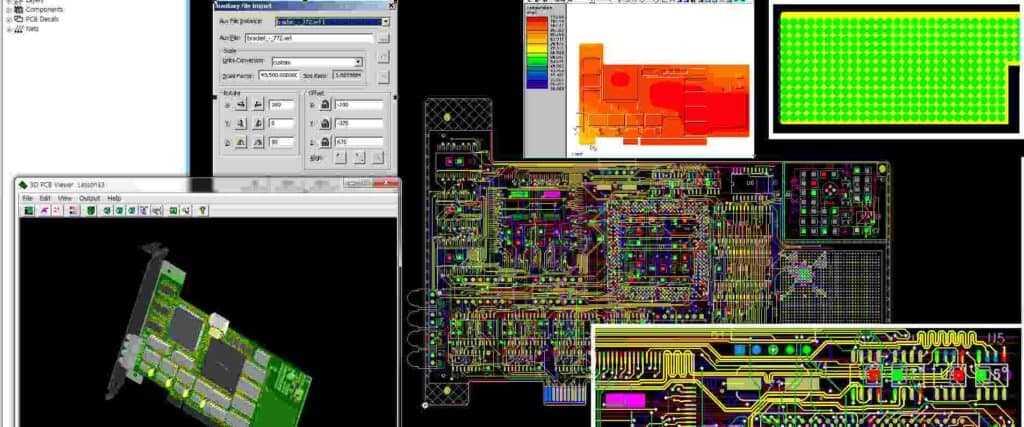A printed circuit board (PCB) is a fundamental component of electronic devices. It provides a platform for electronic components to be assembled and connected to each other. Power amplifiers are one of the most important components in audio systems, and their performance depends on the layout of the PCB.
The layout of a PCB power amplifier is crucial in ensuring the device’s stability and performance. The design of the PCB must consider various factors such as the impedance of the components, the power supply, and the ground plane. A poorly designed PCB can result in unwanted noise, distortion, and even damage to the amplifier or other components. Therefore, it is essential to have a good understanding of the layout of PCB power amplifiers to ensure optimal performance.
In this article, we will discuss the importance of layout in PCB power amplifiers. We will explore the principles of layout design and the factors that need to be considered to achieve the best performance. We will also provide practical tips and guidelines to help you design a high-quality PCB power amplifier.

PCB Layout Basics
When it comes to designing a power amplifier, the PCB layout is crucial. A well-designed layout can make the difference between a functional amplifier and one that fails to perform as expected. In this section, we will cover the basics of PCB layout for power amplifiers, including component placement and trace routing.
Component Placement
The placement of components on the PCB can significantly affect the performance of the amplifier. It is essential to place components in a way that minimizes noise and interference. Here are a few tips for component placement:
- Keep the input and output traces as short as possible to reduce noise.
- Place the power supply components close to the amplifier to reduce voltage drop and noise.
- Place the decoupling capacitors as close as possible to the power pins of the amplifier to reduce noise and improve stability.
Trace Routing
Trace routing is the process of connecting the components on the PCB with traces. The routing of traces can significantly affect the performance of the amplifier. Here are a few tips for trace routing:
- Keep the traces as short as possible to reduce noise and interference.
- Use wider traces for high current paths to reduce resistance and voltage drop.
- Avoid crossing traces to reduce crosstalk and interference.
- Use ground planes to reduce noise and improve stability.
In summary, proper PCB layout is crucial for the performance of a power amplifier. Component placement and trace routing are critical factors that need to be considered carefully. By following the tips outlined in this section, you can design a PCB layout that minimizes noise and interference, and maximizes performance.
Power Amplifier Layout Considerations
Grounding and Decoupling
The grounding and decoupling of a power amplifier layout are critical factors that can significantly impact the amplifier’s performance. The ground planes should be designed to minimize the length of the current loops, which can cause unwanted noise and interference. Proper decoupling of the power supply is also essential to reduce the effects of power supply noise on the amplifier’s output.
Thermal Management
Thermal management is another crucial consideration when designing a power amplifier layout. The heat generated by the amplifier must be dissipated efficiently to prevent overheating and damage to the components. Heat sinks, thermal vias, and other cooling methods can be used to manage the heat generated by the amplifier.
RF Signal Integrity
The layout of the power amplifier can also affect the integrity of the RF signal. The placement of components, routing of traces, and use of vias can all impact the signal quality. Careful attention should be paid to the layout of the amplifier to minimize the effects of parasitic capacitance, inductance, and resistance.
In summary, the layout of a power amplifier is a critical factor that can significantly impact the amplifier’s performance. Proper grounding and decoupling, thermal management, and RF signal integrity are all important considerations when designing a power amplifier layout.
Advanced Techniques

Microstrip vs Stripline
When designing a PCB power amplifier, it is important to choose the right transmission line for your circuit. Microstrip and stripline are two common types of transmission lines used in PCB design.
Microstrip is a type of transmission line that consists of a conductor trace on one side of a dielectric substrate, with a ground plane on the other side. It is easy to manufacture and is suitable for low to medium frequency applications.
Stripline, on the other hand, is a type of transmission line that consists of a conductor trace sandwiched between two ground planes on a dielectric substrate. It provides better shielding and is suitable for high-frequency applications.
Via Placement
Via placement is another important aspect of PCB power amplifier design. Vias are used to connect different layers of the PCB and provide a path for current to flow through.
When designing a PCB power amplifier, it is important to place vias strategically to minimize the impedance of the circuit. Placing vias too close to each other can cause crosstalk and other signal integrity issues.
Crosstalk Mitigation
Crosstalk is a common problem in high-speed PCB designs. It occurs when signals from one trace interfere with signals on an adjacent trace.
To mitigate crosstalk in a PCB power amplifier design, it is important to keep traces as far apart as possible. Using differential signaling and shielding techniques can also help reduce crosstalk and improve overall signal integrity.
In summary, choosing the right transmission line, strategic via placement, and crosstalk mitigation techniques are all important aspects of advanced PCB power amplifier design.

